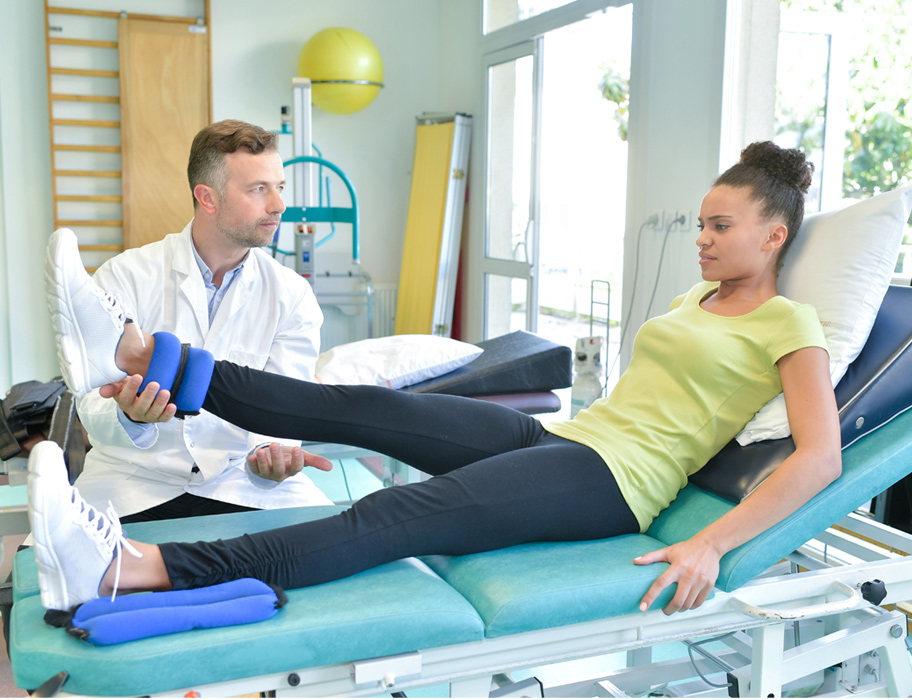What is Sport injuries
Sport injuries are diverse in terms of the mechanism of injury, how they present in individuals, and how the injury should be managed. Defining exactly what a sports injury is can be problematic and definitions are not consistent.
The International Classification of Functioning, Disability and Health (ICF) is one of the most well know mechanisms and considered the gold standard for classification of medical conditions but is currently rarely used in the field of sports medicine. For researchers in sport defining simple, pragmatic, consistent, operational criteria which describe an injury that can be applied across a range of sports is vital, particulalry when developing injury surveillance systems. Many comprehensive systems have been developed to classify injury in order to assist with development of injury surveillance which can be used across sports. There are many ways to classify sports injuries basd on the time taken for the tissues to become injured, tissue type affected, severity of the injury, and which injury the individual presents with.
Mechanism
According to Brukner & Kahn (2012) this is one of the most common methods of classifying sports injuries, and relies on the sports physiotherapist knowing and understanding both the the mechanism of injury and the onset of the symptoms.
Acute
Injury occurs suddenly to previously normal tissue. Acute injuries occur due to sudden trauma to the tissue, with the symptoms of acute injuries presenting themselves almost immediately. The principle in this instance is that the force exerted at the time of injury on the tissue (ie. muscle, tendon, ligament, and bone) exceeds the strength of that tissue.Forces commonly involved in acute injury are either a direct or indirect.
Direct / Contact Injury
- A direct injury is caused by an external blow or force.
- A collision with another person e.g.during a tackle in rugby or football.
- Being struck with an object e.g. a basketball or hockey stick.
- Indirect / Non-Contact Injury.
An indirect injury can occur in two ways:
- The actual injury can occur some distance from the impact site e.g. falling on an outstretched hand can result in a dislocated shoulder.
- The injury does not result from physical contact with an object or person, but from internal forces built up by the actions of the performer, such as may be caused by over-stretching, poor technique, fatigue and lack of fitness.
Common Acute Injuries include:
Ankle injuries can involve strains and tears of the deltoid ligament , calcano fibular ligament , tibifibular ligament , Syndesmotic Ankle sprains.
Knee injuries like Meniscus tears , Anterior Cruciate ligament strain/tears , Posterior cruciate ligament strains , Lateral and medical collateral ligament , patellar tendon injuries , fracture of the patella .
Various muscle strains like Quadriceps Strain, Hamstring tears , Groin strains and calf strains .
Shoulder injuries including rotator cuff tendinopathy , rotator cuff tear , impingement syndrome, Bicep related pathology and SLAP Lesions , Scapular Dyskinesis, Acromioclavicular joint injuries , Adhesive capsulitis .
Elbow injuries include Tennis and Golfers elbow , Flexor/pronator tendinopathy , Medical collateral ligament sprain. Other elbow injuries include supracondylar fractures , Olecranon fractures , radial head fractures and tendon ruptures .
Common wrist injuries include Carpal tunnel syndrome , fracture of the scaphoid, trapezium, De Duervain's tenosynovitis, Intersection syndrome, ganglions , scapholunate dislocation, Triangular fibrocarilage complex tear
Physiotherapy treatment of a sport injuries include a biomechanical assessment of the injury, assessing the kinetic chain with physiotherapy treatment which includes using various modalities like manual therapy , electrotherapy , taping , stretching ,motor control training , vaccum cupping, acupuncture , dry needling , cryotherapy , neurodynamic techniques soft tissue techniques , strength and conditioning, advice on injury prevention and performance enhancement . It also involves a multi professional approach .i.e arranging appropriate referrals , scans etc .

HOW CAN WE HELP YOU?
Call us at 01293529090 or click here to make a booking online or email us at info@prorehab.co.uk for more information.

-
Conditions

